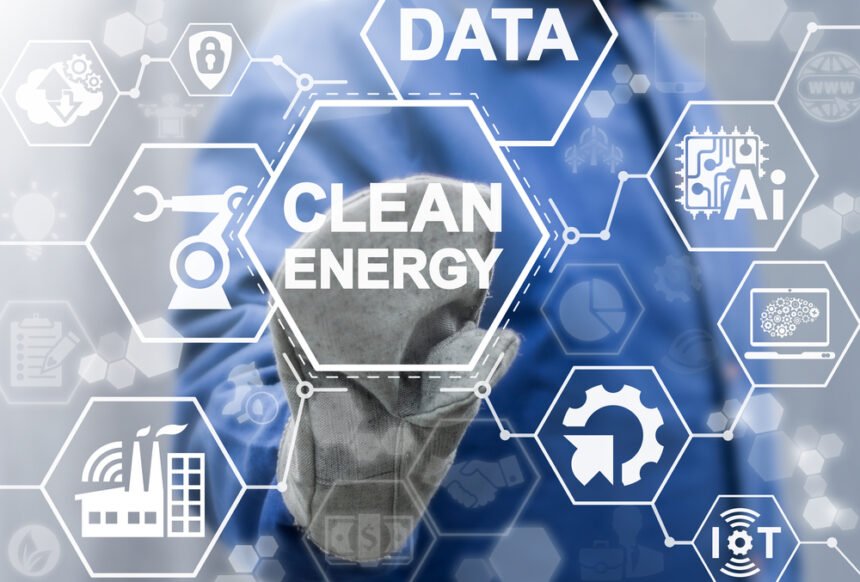Big data technology has become a major disrupting factor in the energy industry. Many energy conglomerates have started embracing data analytics to expand their markets, respond to new trends, streamline operations and bolster efficiency.
The clean energy sector has not been untouched by the big data revolution. As we stated before, it has led to a sudden surge in new renewable energy technology.
Big Data is a New Gamechanger in the Clean Energy Sector
Big data is one of multiple factors influencing the direction of the clean energy sector. In order to appreciate the impact of new data technologies, it is necessary to be aware of other leading trends, such as political momentum driving this change.
The appointment of John Kerry as US climate envoy was a significant one. Kerry was nominated by President Barack Obama to succeed outgoing Secretary of State Hillary Clinton and was confirmed by his Senate colleagues on a vote of 94 to 3, showcasing his popularity among Democrats and Republicans alike. Appointing such a prominent figure to such a vital role highlights the importance of sustainability and the environment to the Biden administration.
Kerry has shown his dedication to ESG and the climate throughout his time working in the US Government, he signed the Paris Agreement 2015 and shortly after he was appointed by President Biden, he tweeted:
“I’m returning to government to get America back on track to address the biggest challenge of this generation and those that will follow, the climate crisis demands nothing less than all hands-on deck.”
Kerry remains incredibly enthusiastic about sustainability and clean energy, having recently confirmed that a remarkable $500 billion was invested in solar, wind and electric vehicles last year alone in the US.
As Kerry and other political players help drive the clean energy sector, companies are looking for ways to use big data to meet their goals. They are exploring the wonders of AI and predictive analytics to drive these changes.
We will appraise the rise of clean energy in further detail below, while asking what the future holds for this lucrative and fascinating space. We will also help understand the ways that big data technology is shaping the industry.
A Look at Clean Energy in 2021
The trend for clean energy has been prevalent for years now, against the backdrop of the assertion that global fossil fuel resources are likely to be depleted by the year 2060.
As recently as 2019, the consumption of renewable energy sources in the US grew for a fourth consecutive year, reaching a record 11.5 quadrillion British thermal units (Btu). As a result, it evolved to account for 11% of total energy consumption levels in the US, with this ratio having increased further through 2020. One of the ways that companies are using data analytics is to identify market growth opportunities. Predictive analytics technology can help anticipate future demand and respond accordingly.
This has helped to increase the demand for clean energy investments markedly, as investors look to leverage the high yields associated with such assets while businesses begin to plan for a future without existing fossil fuels.
Certainly, environment, social and governance (ESG) factors have risen to the top of the corporate board agenda over the course of the last decade or so, with a fusion of governmental policy decisions and changing consumer behaviours combining to underpin the demand for clean energy.
The focus on ESG factors is also creating new ways of incentivizing clean energy suppliers, from the introduction of possible grants to wider initiatives for customers and end users.
Which Jobs and Sectors Will Thrive Through 2021?
As clean energy further penetrates the consumer mainstream and investment in the sector continues to boom, we are also seeing the labor market evolve considerably as a result.
This trend is prevalent in the US, UK and further afield, with the former’s Bureau of Labour Statistics reporting that three of the jobs with the highest forecast growth level are wind turbine technician, registered nurse, and solar technician.
The key takeaway here is that clean energy jobs will come to dominate the labour market over the course of the next 40 years or more, as existing fossil fuel supplies continue to dwindle and elements such as the need to efficiently harness wind and solar power becomes increasingly pressing.
Such trends are telling, as they highlight the growing focus on clean energies and the potential opportunities for investors, while helping business owners to understand how trends are expected to change in the near and medium-term.
One thing is for sure; clean energy is undoubtedly set to dominate the energy and labour markets of the future, so it is never too soon to become an active participant within this space.
How Will Big Data Affect the Clean Energy Sector?
There are a few major ways that big data is going to influence the future of the clean energy industry. Some of the most important benefits of big data include:
- Forecasting future demand with predictive analytics
- Using data analytics to better understand customer demographics
- Using deep learning technology to fine-tune business models to lower costs
- Use AI to conduct new permutations when testing new clean energy technology to bolster its efficiency
There are a lot of compelling reasons to invest in big data technology for clean energy development. New analytics and AI tools will change the industry considerably in the years to come.

